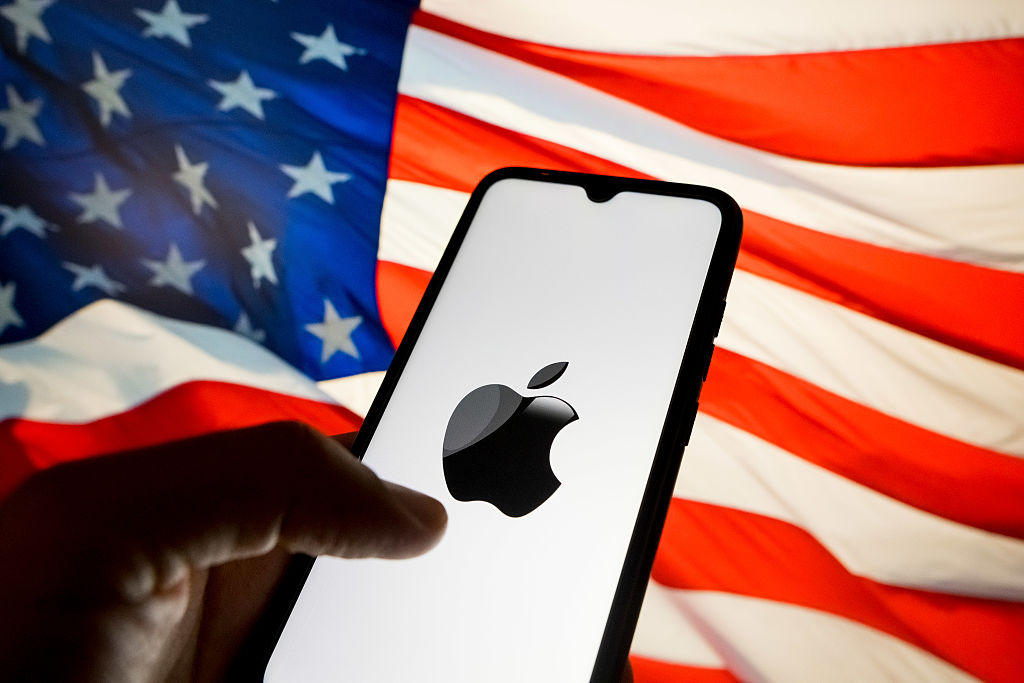Apple announced on Wednesday that it would invest $100 billion to expand its manufacturing operations in the United States. The Apple U.S. investment is the company’s latest effort to avoid President Trump’s tariffs, penalizing businesses for manufacturing products or sourcing components from overseas.
Earlier this year, Apple announced a $500 billion investment in increasing its manufacturing presence in the United States. Together, the moves mark a major strategic shift that could reshape where and how Apple devices are made — and potentially how much they cost.
For consumers, that could mean higher iPhone prices, limited supply and tough upgrade decisions ahead.
Sign up for Kiplinger’s Free E-Newsletters
Profit and prosper with the best of expert advice on investing, taxes, retirement, personal finance and more – straight to your e-mail.
Profit and prosper with the best of expert advice – straight to your e-mail.
How tariffs are affecting Apple
Apple has been heavily impacted by the Trump tariffs so far. While most Apple products are manufactured in China, Apple started to move some production to India and Vietnam during Trump’s second term. Even so, the ever-changing tariffs on China and other countries have hit the business hard.
Apple predicts it is facing $1.1 billion in tariff-related costs in the next quarter, according to The Hill. The company has already amassed $800 million in tariff costs during the previous three months.
What the Apple US investment means
During an Oval Office meeting, Apple CEO Tim Cook announced the investment of an additional $100 billion to launch an American manufacturing program. The program will bring components of Apple’s supply chain to the United States.
That manufacturing expansion includes building a supply chain to manufacture chips in 24 factories located in 12 states. Apple will also expand its partnership with Corning, a glass supplier, to build iPhones and Apple Watches with glass manufactured in Kentucky.
The Apple U.S. investment means more components will be manufactured domestically, but Cook didn’t commit to bringing iPhone assembly to the USA. He stated that iPhones will be assembled overseas “for a while,” but highlighted the fact that Apple is manufacturing many components in the United States.
During the event, Trump threatened to implement a 100% tariff on semiconductors and chips that are manufactured internationally, but explained that companies committed to building those components in the United States wouldn’t be charged.
“But the good news for companies like Apple is, if you’re building in the United States, or have committed to build, without question, committed to build in the United States, there will be no charge,” Trump said. He did not provide any additional details on when that 100% tariff might be implemented.
What the Apple tariff strategy means for device prices

(Image credit: NurPhoto / Contributor)
With its U.S. investment commitment, Apple appears to be avoiding some of the tariffs that Trump has implemented, such as the extra 100% tariff on semiconductors and chips produced overseas. But its total $600 billion commitment to United States manufacturing is no small investment, either.
Though Apple may dodge tariffs, chances are that consumers will help pay for at least part of that $600 billion investment. Rumors of an iPhone 17 price increase are already circulating.
Some reports, like this recent analysis from Tom’s Guide, suggest Apple may raise iPhone 17 prices this fall. The speculation stems from a Wall Street Journal report indicating Apple could charge more for the new models and is likely to sidestep citing tariffs as the cause.
This pricing strategy may tie into Apple’s ongoing efforts to offset rising costs — such as tariff exposure and expanding U.S. manufacturing — without drawing direct attention to those pressures.
What the Apple tariff strategy means for device supply
There’s also the issue of device availability. Details about the Apple U.S. manufacturing efforts are currently limited, but scaling up existing operations or implementing new manufacturing practices is often a challenging and somewhat slow process.
If these manufacturing transitions result in limited components, product availability could decrease, and that limited availability could result in price hikes.
Ultimately, if you anticipate buying an Apple product in the coming months, be sure to keep a close eye on prices and availability. It may be a good idea to buy an iPhone now before potential price increases. Apple is taking definitive efforts to avoid tariffs, but the Apple U.S. investment could end up increasing prices and costing consumers more in the end, too.
What This Means for Your Next iPhone Upgrade
Apple’s massive U.S. investment may help it dodge costly tariffs, but those savings aren’t guaranteed to trickle down to consumers. In fact, building more domestically could contribute to higher production costs — and higher prices.
If you’re thinking about upgrading your iPhone or buying other Apple tech, keep an eye on pricing and availability heading into the fall. Making your move sooner rather than later might save you money.


